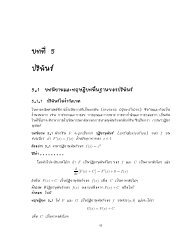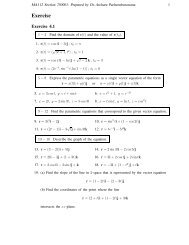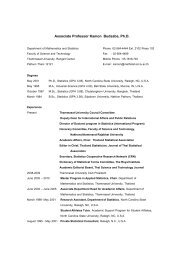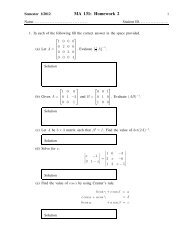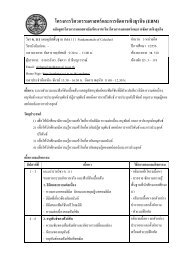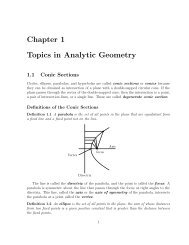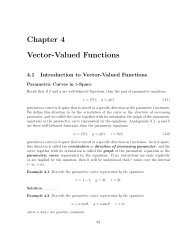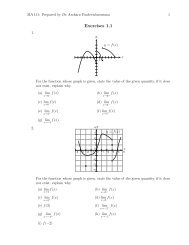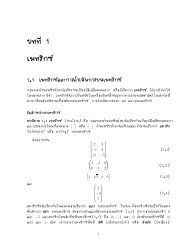Chapter 1 Topics in Analytic Geometry
Chapter 1 Topics in Analytic Geometry
Chapter 1 Topics in Analytic Geometry
Create successful ePaper yourself
Turn your PDF publications into a flip-book with our unique Google optimized e-Paper software.
•MA112 Section 750001: Prepared by Dr.Archara Pacheenburawana 42Interpret<strong>in</strong>g the Sign of the Dot ProductIt will often be convenient to express Formula (3.5) asu·v = ‖u‖‖v‖cosθ (3.6)which expresses the dot product of u and v <strong>in</strong> terms of the lengths of these vectors andthe angle between them. S<strong>in</strong>ce u and v are assumed to be nonzero vectors, this version ofthe formula make it clear that the sign of u·v is the same as the sign of cosθ. Thus, wecan tell from the dot product whether the angle between two vectors is acute or obtuse orwhether the vectors are perpendicular.uθvuθvuθvu·v > 0u·v < 0u·v = 0Direction AnglesIn both 2-space and 3-space the angle between a nonzero vector v and the vectors i, j,and k are called the direction angles of v, and the cos<strong>in</strong>es of these angles are called thedirection cos<strong>in</strong>es of v. Formulas for the direction cos<strong>in</strong>es of a vector can be obta<strong>in</strong>edform Formula (3.5). For example, if v = v 1 i+v 2 j+v 3 k, thencosα = v·i‖v‖‖i‖ = v 1 v·j, cosβ =‖v‖ ‖v‖‖j‖ = v 2 v·k, cosγ =‖v‖ ‖v‖‖k‖ = v 3‖v‖yzjvkvβαixγαβjyxiTheorem 3.9 The direction cos<strong>in</strong>es of a nonzero vector v = v 1 i+v 2 j+v 3 k arecosα = v 1‖v‖ , cosβ = v 2‖v‖ , cosγ = v 3‖v‖



